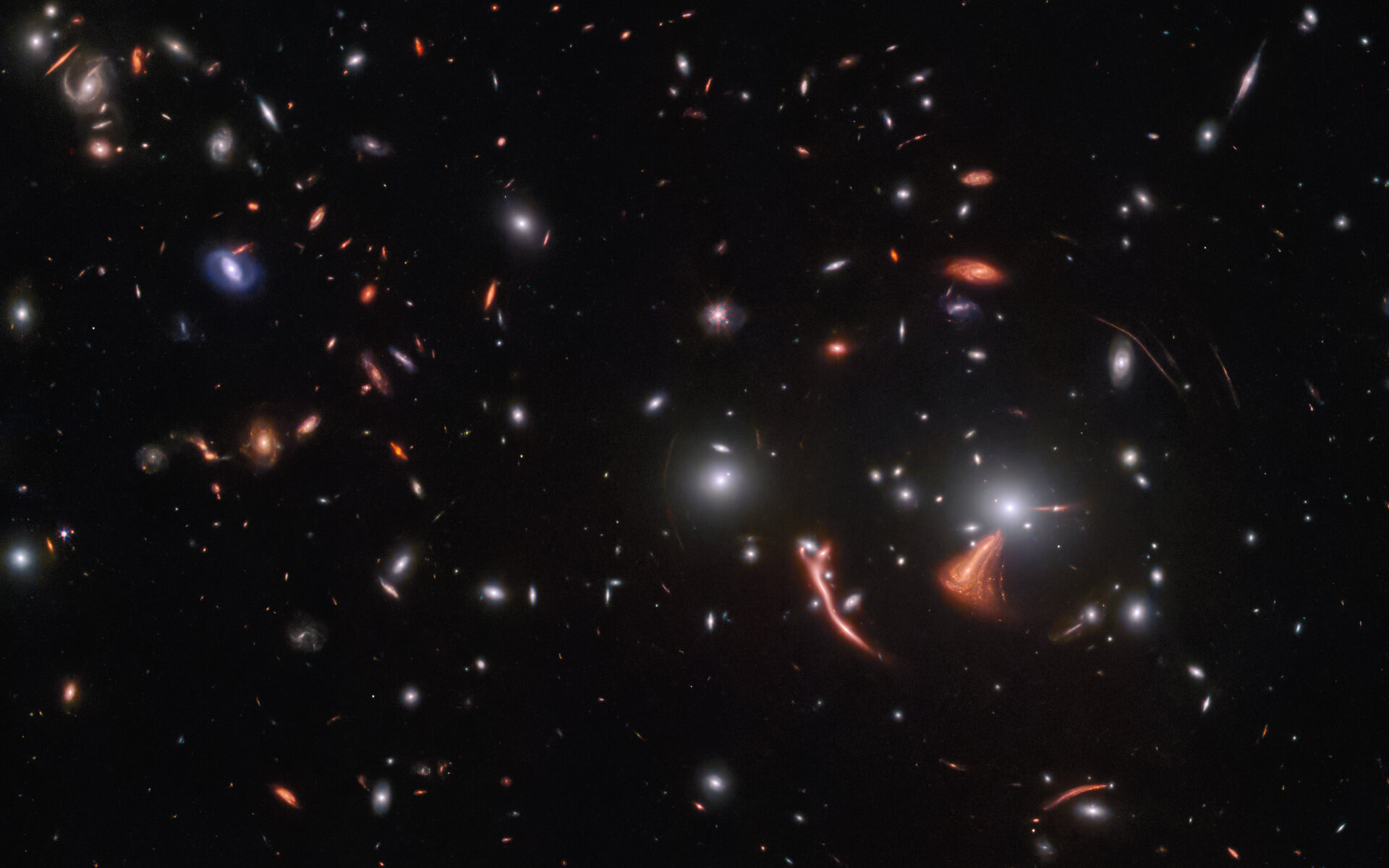One of the more intriguing aspects of the cosmos, which the James Webb Space Telescope (JWST) has allowed astronomers to explore, is the phenomenon known as gravitational lenses. As Einstein’s Theory of General Relativity describes, the curvature of spacetime is altered by the presence of massive objects and their gravity. This effect leads to objects in space (like galaxies or galaxy clusters) altering the path light travels from more distant objects (and amplifying it as well). By taking advantage of this with a technique known as Gravitational Lensing, astronomers can study distant objects in greater detail.
Consider the image above, the ESA’s picture of the month acquired by the James Webb Space Telescope (JWST). The image shows a vast gravitational lens caused by SDSS J1226+2149, a galaxy cluster located roughly 6.3 billion light-years from Earth in the constellation Coma Berenices. The lens these galaxies created greatly amplified light from the more distant Cosmic Seahorse galaxy. Combined with Webb‘s incredible sensitivity, this technique allowed astronomers to study the Cosmic Seahorse in the hopes of learning more about star formation in early galaxies.
Closer galaxies appear bright and blue-white in the image, while the more distant galaxies appear dimmer and reddish. This is caused by redshift, where the expansion of space between a distant object and the observer lengthens the wavelength, shifting it towards the red end of the spectrum. Where the more distant galaxies line up with the lenses in the foreground, they appear as red arcs because of how the lenses warp the coming from them. The SDSS J1226+2149 galaxy cluster and the resulting lens can be seen in the lower right as bright white spots (which indicate bright elliptical galaxies).
The Cosmic Seahorse galaxy is the stretched-out red arc in the vicinity of the lens, appearing much brighter and thicker than the others. Like many previous releases by the JWST team, this image was part of a campaign that follows up on previous observations made with the venerable Hubble Space Telescope (HST). The image was captured by the Near Infrared Camera (NIRCam), Webb’s primary near-infrared camera, as part of a program designed to study the earliest stages of star formation in distant galaxies.
This program is consistent with a major science objective for the JWST: to push the boundaries of astrophysics and cosmology by observing how galaxies formed in the early Universe (ca. 13 billion years ago). By comparing this data to observations of galaxies in more recent epochs, astronomers can track how the Universe has evolved over time, which will help resolve some enduring cosmological mysteries. In particular, astronomers want to know how quickly stars formed in the early Universe and to characterize the environments in early galaxies that gave rise to new stars.
Based on our current understanding of galactic evolution, the first generation of stars in the Universe (Population III stars) were composed entirely of hydrogen and helium. These stars slowly created heavier elements (carbon, nitrogen, oxygen, silica, iron, etc.) in their interiors through nuclear fusion, then dispersed them when they went supernova and blew off their outer layers. This seeded the interstellar medium (ISM) of our galaxy with minerals and metals that (along with hydrogen and helium) formed subsequent generations of stars (Population II and I).
Studying early galaxies will allow astronomers to test our models of galactic evolution and learn more about how galaxies changed over time. These observations will provide rich datasets for the astronomical community, allowing various investigations into cosmic phenomena. They will also demonstrate the capabilities of Webb as it peers farther back into the Universe than any observatory has ever seen. And to top it off, the images are a source of inspiration for people who are privy to the most detailed observations of the cosmos ever made.
Further Reading: ESA

